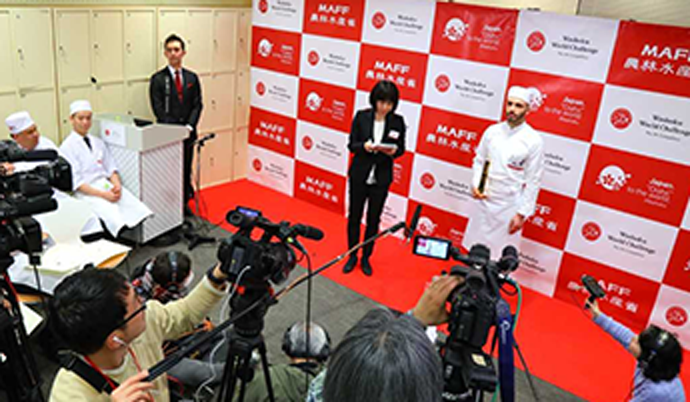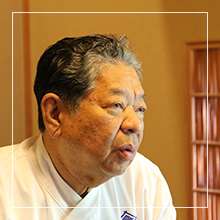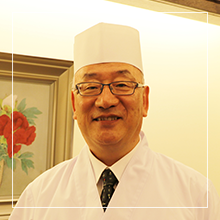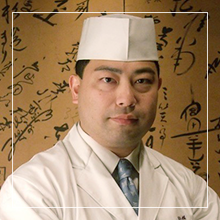About the Washoku World Challenge
The Washoku World Challenge is a cooking contest in which Japanese cuisine chefs from all over the world compete in technical expertise and passion for Japanese food. The contest, the 5th of its kind, is organized by the country’s Ministry of Agriculture, Forestry and Fisheries for non-Japanese chefs.
To widen the door for chefs like you to share your love for Japanese cooking, this time we will be holding qualifying tournaments in six cities worldwide (London, New York, Los Angeles, Hong Kong, Bangkok and Tokyo). The six chefs who pass the qualifiers will be invited to the final tournament, to be held in Tokyo on February 13th and 14

If you win in the qualifying tournament, you will:
- Be invited to the final tournament, to be held in Japan
- Be able to participate in Japanese cooking seminars in Japan
- Have the chance to apply for the Certification of Cooking Skills for Japanese Cuisine in Foreign Countries (Bronze)
- Be covered by international media
ภาษาไทย(Tai languages)
Contest Theme: UMAMI

Umami is the source of the savoriness of Japanese cuisine. One of the five basic tastes, the others being sweetness, sourness, saltiness, and bitterness, it is an important component of a dish’s flavor. Recognition of umami has increased in recent years, and the word has made its way into many non-Japanese dictionaries. The umami taste is usually a product of some combination of inosinic acid, amino acids such as glutamic acid, and nucleic acids such as guanylic acid.
In Japan, the technique of extracting umami from kombu kelp and bonito flakes to create dashi broth was developed approximately 500 years ago. Many cookbooks were published in the mid-Edo period (around 1651-1745), and these strongly advocated the importance of dashi. Japan has a long history of valuing dashi highly, and its umami has brought out the flavors of ingredients and played key roles in the creation of delectable dishes.
The basic dashi is made with kombu and bonito flakes. The combination of the glutamic acid in kombu and the inosinic acid in bonito flakes create a delicious umami taste.
Click here for more on umami:Essential Ingredients of Japanese Food
Send us recipes that reflect your distinctive style and your passion for umami!
ภาษาไทย(Tai languages)



